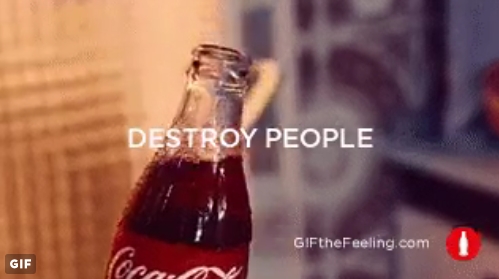Coca-Cola is a pioneer in leveraging the immense power of shareable, consumer-generated content. So the realisation that their personalisation campaign, ‘#GIFtheFeeling’ was hijacked by more than a few rebellious detractors has been a disaster in the making.
Launched to promote Coke’s new brand promise, ‘Taste the Feeling’, the ‘GIF the Feeling’ campaign is supported by an online GIF creator tool that enables consumers to caption their feelings over Coke video clips and then share their co-created content with friends on Facebook, Twitter and Instagram.
What Coke wasn’t expecting is that within just days of going live, trolls had hijacked the GIF maker and instead of sharing their love for the icy cool beverage these users sought to ridicule the brand.
Consumer-generated content is vast, organic and influential, making it difficult for marketers to control their brand’s messaging. The upside is that when marketers create programs with customer participation it inspires content creation and encourages sharing amongst friends and peers.
Take Coca-Cola’s ‘Share a Coke’ campaign. The soft drink manufacturer personalised cans and bottles of Coke with 250 popular names – this campaign delivered the brand a 2% increase in US sales.
Other consumer-generated content campaign successes include: Burberry – ‘The Art of the Trench’, which saw online sales surge by 50% year-on-year; Starbucks’ – ‘White Cup Content’, where close to 4,000 customers personalised their cups; and Tourism Queensland – ‘Best Job in the World’ which attracted 34,000 videos to win a high paying job.
Today, consumer-generated content has quickly become very influential and is now one of the most trusted sources of brand information for younger generations – those that Coke most wants to reach.
The younger generation of consumers now uses non-traditional media to search, discover and explore brands. Unlike previous generations that consumed commercially created content, Millennials spend 30% of their media time on content created by their peers, including videos, GIF’s, photos and memes.
Coupled with the erosion of trust in brands and increasing skepticism of traditional marketing messages, word-of-mouth content is trusted 40% more by Millennials than information they get from traditional media sources, (TV, print & radio etc.).
Consumer-generated content programs have a place in the modern marketer’s toolbox. Successful personalisation campaigns create connections that empower fans to endorse the brand by enabling them to create brand stories using their own voice.
However, creating sustainable networks of advocates who continue to advocate the brand requires more than marketing campaigns that create online buzz. Rather, it is the creation of great, everyday customer experiences that delivers positive word-of-mouth; experiences that are relevant, simple, feel-good moments that deliver the brand promise seamlessly throughout the customer purchase journey.
The lesson for marketers – before you hand over your brand to today’s consumer, is understand your customer, their needs and brand attitudes and their relationship with popular culture – or risk a backlash by cynical consumers.

